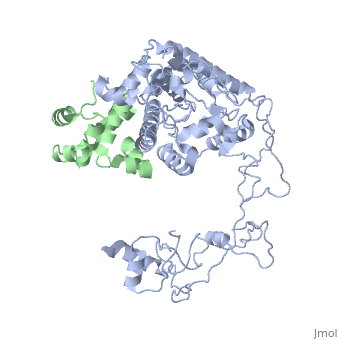UV excision repair protein: Difference between revisions
Jump to navigation
Jump to search
Michal Harel (talk | contribs) No edit summary |
Michal Harel (talk | contribs) No edit summary |
||
| Line 9: | Line 9: | ||
The protein contains a modular domain structure consisting of ubiquitin-like domain, ubiquitin-associated domain and XPC (xeroderma pigmentosum group C protein)-binding domain<ref>PMID:21047872</ref>. | The protein contains a modular domain structure consisting of ubiquitin-like domain, ubiquitin-associated domain and XPC (xeroderma pigmentosum group C protein)-binding domain<ref>PMID:21047872</ref>. | ||
== 3D Structures of UV excision repair protein == | == 3D Structures of UV excision repair protein == | ||
[[UV excision repair protein 3D structures]] | |||
== References == | == References == | ||
<references/> | <references/> | ||
</StructureSection> | |||
[[Category:Topic Page]] | [[Category:Topic Page]] | ||
Latest revision as of 10:40, 17 March 2024
FunctionUV excision repair protein (Rad23) is a yeast protein involved in nucleotide excision repair. The human homologs are hHR23A and hHR23B. hHR23A plays a role in translocating polyubiquitinated proteins to the proteasome. Structural highlightsThe protein contains a modular domain structure consisting of ubiquitin-like domain, ubiquitin-associated domain and XPC (xeroderma pigmentosum group C protein)-binding domain[1]. 3D Structures of UV excision repair proteinUV excision repair protein 3D structures References
|
| ||||||||||
